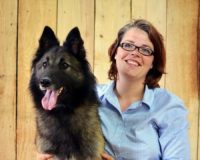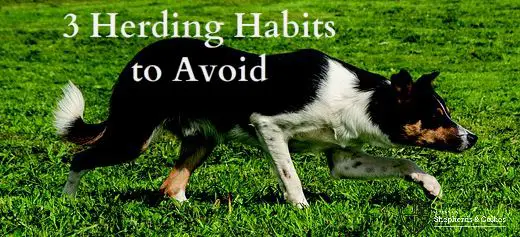3 Bad Herding Habits to Avoid
Three Bad Habits to Avoid if you Want to Try Herding Someday
So you want to herd with your dog someday? You’ll want to be sure you and your dog are not developing any naughty habits or mindsets that might negatively affect your future herding instruction. Perhaps you have a puppy, or maybe it’s an older dog, that you would like to try herding with someday - either way, you need to be sure you are building the best foundation for future training by avoiding naughty habits.
As in all learning, in both humans and dogs, establishing bad habits can be a major downer and can take serious time to train through and repair. It’s best to not develop any major training hiccups because a dog developed a bad habit. Herding breed dogs are smart and without a proper path of training, even in the day to day, they can pick up some hard-to-break habits.
The following are some naughty habits which you should avoid or eliminate as soon as possible, if you want to start serious herding training.
1) Allowing the dog to regularly chase other animals (even on the other side of a fence)
This naughty habit creates a very hard-to-break behavior of CHASING. If you let your dog out into a yard where he can run down the fence (or in the fence!) chasing horses, llamas, sheep, or other stock, you are creating a huge issue for the future.
The dog is getting great pleasure out of chasing and watching animals (including stock) flee. Without a person in the picture to put some constraints or rules on the situation, a very strong bad habit is being formed. Chasing stock is NOT herding stock, and when the dog rushes at the animals and they flee, the dog gets a little excited smile on its face, which is self-rewarding.
You can eliminate this in a few ways.
- Never let the dog out while animals are in their area and vice versa.
- You can put a visual barrier up (shade cloth or tarp) on the fence so the dog cannot see the other animals and make them move.
- You could also choose to hand walk your dog or let them into a yard where they can’t chase animals up and down the fence line.
If this behavior is happening at your home now, you need to eliminate it as soon as possible to make your future herding training easier!
2) Allowing your dog to run the household
Herding breed dogs are smart, and are sometimes controlling. These can be good traits for moving stubborn sheep or bull-headed cattle, but not good traits for a human/dog relationship. If you are not careful, herding dogs will control you!
Herding is a partnership and a bossy dog that gets what it wants is a hard partner to work with.
Never allow your puppy or dog to nip or bite you. This is simply not allowed. If your pup nips you, make a high-pitched noise or loud “ouch!” to startle the puppy. If you struggle with this in an older dog, see a professional trainer in your area.
Basic obedience is truly necessary. Your dog needs to not only know “heel”, “come”, “sit”, “stay”, and “down”, but needs to do them consistently and even when they don’t want to (i.e. laying on wet ground, coming even when the sheep are leaving the area, and sitting and waiting while you enter the gate first). A dog that drags you around or totally disregards your commands will be a hard dog to teach to herd. You can get more for your money if you aren’t wasting your herding lesson time working on basic obedience.
It is highly suggested that obedience classes are in your plans. Many other classes including agility and rally can also build relationships and teach skills that can be valuable to your future herding education.
3) Not socializing your puppy or dog to new places and people
In order to learn to herd, you will have to go off-site to a farm/herding instruction center and meet new people, new dogs (possibly), and see new things. If your dog has never left home, it’s highly likely that your dog could be scared or become a “home-body” where they cannot function outside of their home. This mindset can be a serious obstacle to learning. If your pup is not taken new places and getting positive early development trips, you may not even be able to herd. Older dogs hopefully have gotten socialization as a pup but if they haven’t, you can try dog classes at your local training facility to evaluate where they are and get a path to improve or continue socialization.
Socializing your puppy or dog to traveling includes crate training. Between herding sessions, your dog will need a quiet space to think about his learnings, get a drink, and relax a bit. A dog crate in your vehicle is a good place for those things. In addition, it is also FAR safer for your dog to travel in a crate. Consider the crate and traveling in a car as part of socialization and travel etiquette for the herding trainee.
If you have a puppy or dog that you want to try herding with “someday”, you can start today by setting yourself up for success! Reducing bad habits such as chasing animals and building good habits such as obedience skills and good socialization will help your dog, your future self, and future herding instructor! Good luck!
Article By Eva Raczka, Exclusively for Guild of Shepherds and Collies
Meet Our Evangelist: Eva Raczka








